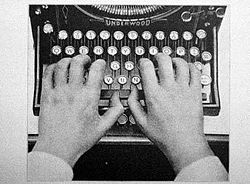I'm Writing a Book
I've been a little bit slow to post these days, and that is because I'm in the process of writing a book. Exciting! The book will synthesize and expand on many of the topics that I have written about on this blog. Namely, the art and science of how to move better and feel better, from a "neurocentric" perspective.
The book will be called "A Guide to Better Movement: Brain-Based Strategies to Move Better and Feel Better."
To give you some idea of what the book is about, here is the current draft of the Introduction:
The purpose of this book is to provide a valuable resource to: physical therapists; body workers; personal trainers; instructors in yoga, pilates and martial arts; and anyone else interested in moving better and feeling better. I have tried to write this book with enough detail and science to appeal to movement professionals, while at the same time remaining accessible to readers with no pre-existing knowledge of the subject matter. With that in mind, I have several goals.
First, to provide a science based yet common sense framework for understanding motor control and its relationship to performance, pain and personal well-being. The hopeful result is a simple lens through which to understand a large amount of complex and seemingly contradictory information from many different fields, all of which use their own vocabulary and concepts.
For example, pain is best understood in reference to modern neuroscience and pain science, but the concepts and technical jargon used in these fields can be nonintuitive and inaccessible. However, even though terms like neuromatrix, neuroplasticity, neurotags, and central sensitization sound intimidating, they convey concepts that are actually familiar and easy to understand.
In fact, an understanding of these ideas was anticipated and embodied in many ways by various somatic traditions like yoga and the martial arts. Unfortunately, this understanding was expressed in terms that were prescientific, or merged with spiritual claims. This makes it difficult for these traditions to explain themselves to the mainstream in a way that allows them credibility and access. Part of my intention with this book is to bridge the gap between different schools of thought, allow better transfer of information, find areas of convergence, and remove concepts that cannot be squared with evidence. Put another way, I would like to synthesize ideas that are separate, simplify ideas that are complex, and clarify ideas that are fuzzy.
The second goal of this book is to articulate some general principles that can be used to improve any program that uses movement to reduce pain or increase physical performance. Whether you do yoga, Pilates, physical therapy, or corrective exercise, I hope that this book will help you understand exactly why your methods work, why some things you might be doing are counterproductive, and how you can improve what you do.
The third goal of this book is to provide some movement lessons that are based on the science and principles articulated in the preceding sections. In that regard, chapter six includes twenty five movement lessons that are based on the Feldenkrais Method, each of which teaches a different developmental function such as reaching, walking or rolling over. If you have not been previously exposed to Feldenkrais, you find these lessons unique, interesting, fun, challenging and beneficial. And an ideal way to explore movement on your own, without a coach or teacher.
Hopefully I'll be done with this by the March 2014. Until then, I will definitely continue to post, possibly even with some previews of the book, but with a little less frequency.

